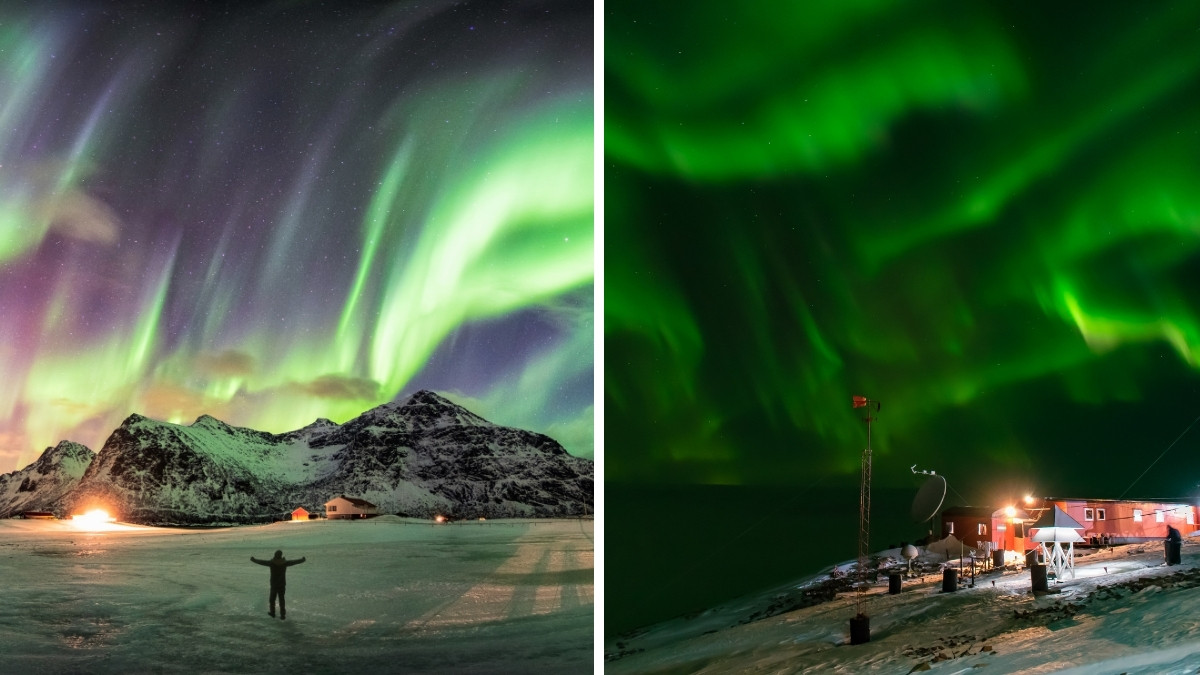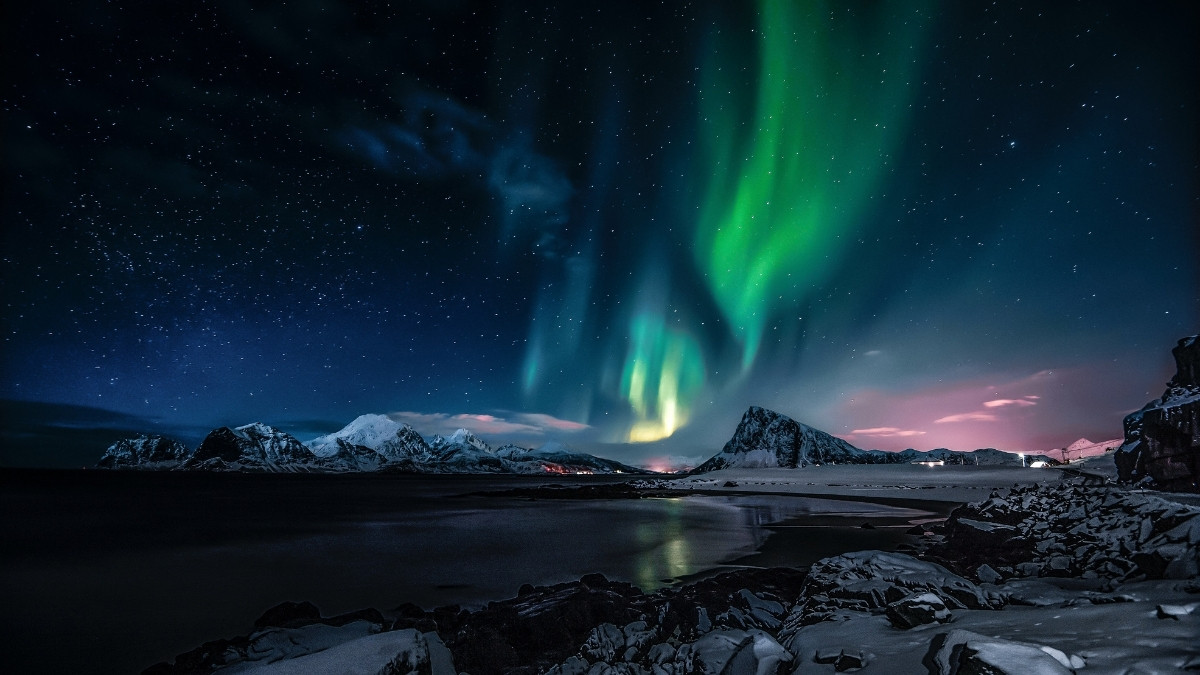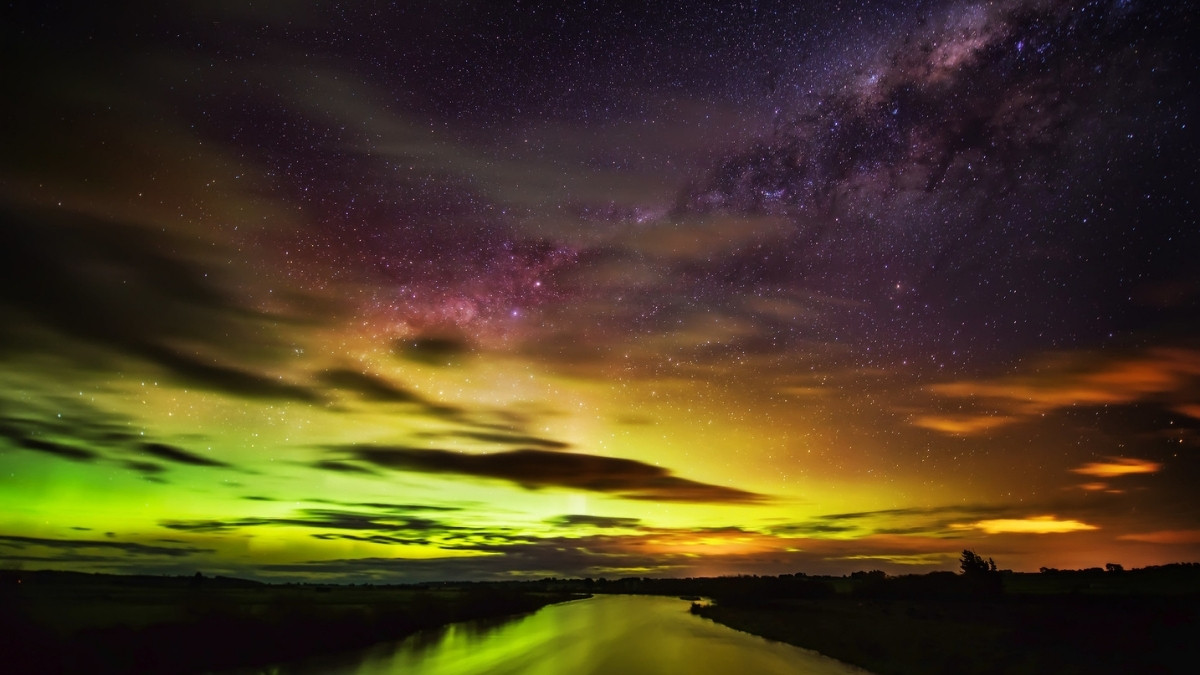Key Points
- Auroras are caused by solar wind hitting Earth's magnetic poles.
- The primary difference is their location and accessibility for viewing.
- The colors and celestial origins are identical in both hemispheres.
Northern Lights vs Southern Lights: As the Sun gets closer to the peak of its 11-year cycle, the aurora has been brighter and more widespread than usual. The solar maximum is a time when the sun is more active than usual. This causes geomagnetic storms to happen more often and with more force, which makes the auroras look even more amazing.
The ethereal dance of the aurora borealis, or Northern Lights, often gets a lot of attention, but the aurora australis, or Southern Lights, is just as beautiful and has its own magical appeal. Many people are interested in these two famous natural wonders and want to know if they are the same. If not, what sets them apart? Let's look at what makes these polar lights different and similar at the same time.
What Exactly are Auroras?
The names "Northern Lights" and "Southern Lights" refer to the very same phenomenon, which is scientifically known as an aurora. It happens when the Sun and Earth interact with each other in space. What we see as the beautiful light show is a result of that interaction.
The Sun sends out a stream of charged particles all the time. This is called solar wind. When this solar wind reaches our planet, some of these particles are caught by Earth's magnetic field and funneled towards the magnetic poles.
Then, the particles hit oxygen and nitrogen atoms in Earth's upper atmosphere, which makes them excited and causes them to give off light in the form of photons. The most common color, a brilliant green, is produced by oxygen molecules, while higher-altitude oxygen can create rare red auroras. When nitrogen collides, it makes blue and purple colors.
Difference between Northern Lights and Southern Lights
The main difference between the two auroras is where they are and how easy they are to get to. While they are essentially the same phenomenon, the places you can see them are vastly different. People in the northern hemisphere can see the Northern Lights, and people in the southern hemisphere can see the Southern Lights.

Aurora Borealis (left) and Aurora Australis (right)
| Feature | Northern Lights (Aurora Borealis) | Southern Lights (Aurora Australis) |
| Location | Northern Hemisphere's high latitudes | Southern Hemisphere's high latitudes |
| Viewing Spots | Alaska, Canada, Iceland, Norway, Finland | Antarctica, New Zealand, Tasmania, Patagonia |
| Accessibility | Highly accessible with many viewing locations | Less accessible due to fewer landmasses |
| Name | Aurora Borealis | Aurora Australis |
| Appearance | Often appears as a green glow or curtain | Similar appearance, but can be asymmetrical |
Where Can You See an Aurora?
The Northern and Southern Lights are most different in where they are. People in the Northern Hemisphere who live in high-latitude areas can see the Northern Lights. This area is often called the "auroral oval." The Southern Lights (Aurora Australis), on the other hand, happen over the South Pole, where there isn't much land, making them much harder to see.
Northern Lights (Aurora Borealis) Visibility Location
-
Alaska: Famous for its dark, clear skies and easy-to-reach viewing spots.
-
Canada: The Yukon, Northwest Territories, and northern parts of British Columbia are some of the best places to see things.
-
Scandinavia: Finland, Norway, and Sweden provide a mix of stunning landscapes and organized aurora tours.
-
Iceland: Easy for tourists to get to, and you can see the lights just outside the capital, Reykjavík.

Northern Lights over the Mountains
Southern Lights (Aurora Australis) Visibility Location
-
Antarctica: It is the best place to see the aurora australis, but it is also the hardest to get to.
-
New Zealand: The South Island, especially Stewart Island and the Catlins, has some of the best places to see it.
-
Australia: Tasmania is a great place to see the lights. The southern coast is a good place to see them.
-
South America: The southernmost parts of Chile and Argentina, like Patagonia and Ushuaia, can also be seen.

Southern lights, New Zealand, Courtesy: flickr.com
Check Out: Northern Lights Tonight: Aurora Borealis Chances Fade for US States This Week
Are the Southern and Northern Lights Mirror Images?
Scientists thought for a long time that the auroras at the North and South poles were exact copies of each other because the particles follow the same magnetic field lines. But new scientific discoveries have shown that this isn't always the case.
NASA and other groups have found that the aurora borealis and aurora australis can sometimes be uneven, with different shapes and behaviors. The core physics and causes are the same, but the magnetosphere's response to solar wind is slightly different, which can lead to unique, non-symmetrical displays.
This new finding adds another interesting layer to the study of these two light shows. It shows that even identical twins can have their own unique personalities.
Similarities between Northern and Southern Lights
Here are the features that make you wonder if the southern light looks the same as the northern lights or not.
| Common Feature | Aurora Borealis and Aurora Australis |
| Scientific Cause | Solar wind colliding with Earth's atmosphere |
| Appearance | Green, purple, blue, and red light displays |
| Celestial Origin | Both are a result of solar activity |
| Optimal Viewing | Best seen during dark, clear winter nights |
Also Read - Full Moon Nicknames by Months in the US: Check Meaning, Dates, and Traditions
The Northern Lights and Southern Lights are two sides of the same beautiful coin, and they both come from the same place in the sky. The real difference is not what they are, but where they are. Both are stunning to look at, but the northern aurora is more of a travel staple because it's easier to get to the best viewing spots. The southern aurora, on the other hand, is still a rare and sought-after wonder.
Comments
All Comments (0)
Join the conversation